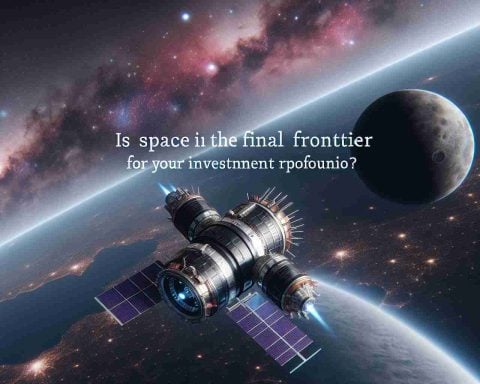- The holy month of Ramadan in 2025 is projected to begin on Saturday, March 1, based on detailed astronomical calculations.
- The crescent moon is expected to be visible on Friday, February 28, at 3:45 a.m., and it will remain in the sky for about 32 minutes after sunset.
- While astronomical data provides guidance, the Crescent Sighting Committee will give the official confirmation to commence Ramadan.
- This celestial observation highlights the blend of science and tradition, fostering community and spiritual reflection.
- Moon sighting rituals connect Muslim communities globally, underscoring unity and shared cultural practices.
Astronomers from Qatar Calendar House and Kuwait’s Al-Ajari Scientific Center have orchestrated a celestial symphony, unveiling that the holy month of Ramadan in 2025 is set to commence on Saturday, March 1. Their detailed astronomical calculations suggest that the crescent moon will make its ethereal appearance on Friday, February 28, at the early hour of 3:45 a.m., illuminating the skies above Doha and Kuwait City.
As the day unfolds, anticipation will build among those with eyes lifted skyward, waiting to catch a glimpse of the slender crescent. The crescent moon is expected to linger for about 32 enchanting minutes after sunset, offering a fleeting yet miraculous moment to mark the beginning of this sacred month. While astronomical calculations provide a blueprint, the final ceremonial nod lies with the Crescent Sighting Committee at the Ministry of Endowments and Islamic Affairs. Only their official confirmation will set the spiritual wheels in motion for the global Muslim community.
This enchanting dance of celestial bodies not only spells the start of Ramadan but also serves as a reminder of the harmonious blend of science and tradition. As whimsical as it may seem, this ritual of moon sighting connects communities, households, and hearts across borders, prompting reflection, community, and spiritual rejuvenation. As we watch the skies with wonder, the lesson resonates: In the quietude of the cosmos, lies a syncopated rhythm that unites us.
Your Ultimate Guide to the Celestial Symphony of Ramadan 2025
The Moon and Ramadan: Science Meets Tradition
The holy month of Ramadan epitomizes a profound blend of spirituality and astronomy, with millions of Muslims worldwide eagerly anticipating its commencement, guided by lunar cycles. The announcement from Qatar and Kuwait for March 1, 2025, signifies this harmonious interplay between celestial phenomena and religious observance.
Factual Insights into the Lunar Observation
How-To Steps & Life Hacks for Crescent Sighting:
1. Timing Is Everything: Begin your observation during twilight, approximately just after sunset. The new crescent can usually be spotted just above the horizon.
2. Positioning: Find a location with an unobstructed view of the western horizon. Elevated areas such as hilltops provide the best vantage points.
3. Use Binoculars: Initially use binoculars to spot the crescent moon and then try to locate it with the naked eye.
4. Focus on Weather Conditions: Clear skies without obstructions like clouds make the process easier.
5. Collaborate with Local Groups: Joining a local moon sighting group can enhance the experience and accuracy of the observation.
Real-World Use Cases
Across the globe, communities unite for the lunar observation that marks Ramadan. Countries with diverse Muslim populations such as Indonesia, Pakistan, and Egypt hold communal gatherings for the initial crescent sighting, fostering cultural unity and shared spiritual experiences.
Market Forecasts & Industry Trends
The interest in astronomy among Muslim populations is increasing, bolstered by technologies such as mobile apps and online portals that predict lunar phases. These tools are helping traditional moon sightings stay relevant in a digital age.
Reviews & Comparison
While traditional methods rely on visual observation, technological advancements provide alternative means. Applications such as “MoonCalc” and “Crescent Moon” allow users to project moon visibility across different locations, making them valuable tools compared to traditional methods.
Controversies & Limitations
Moon sighting often requires consensus, which can lead to regional differences in the start of Ramadan. Variability in atmospheric conditions and the subjective nature of human observation can sometimes spark debate, necessitating clarification from authoritative religious bodies.
Security & Sustainability
Promoting a communal experience, moon sighting events often enhance social security by fostering unity. Sustainable practices, such as reducing light pollution and using eco-friendly transportation to sighting locations, are encouraged to protect the environment.
Pros & Cons Overview
Pros:
– Enhances communal bonds and cultural ties.
– Provides a tangible connection to celestial events.
– Encourages scientific curiosity and exploration of astronomy.
Cons:
– Subjective interpretations can lead to differences in religious observance.
– Weather and geographical challenges limit visibility in certain areas.
Actionable Recommendations
– Participate in community-based moon sighting events to partake in the shared spiritual experience.
– Equip yourself with apps for moon phase predictions to enhance traditional observations.
– Educate yourself on reducing light pollution to contribute to more effective celestial observations.
For further explorations in astronomical phenomena, visit NASA.
Prepare yourself for Ramadan 2025 by engaging both the scientific and spiritual, to truly appreciate this celestial experience.



















